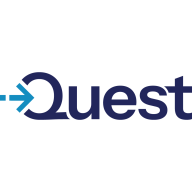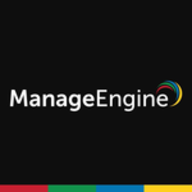


ManageEngine Endpoint Central and KACE Systems Management Appliance (SMA) both operate in the endpoint management solutions market. Based on user feedback, ManageEngine Endpoint Central holds an edge due to its cost-effectiveness and strong support, while KACE SMA is praised for its rich feature set which justifies its higher price tag.
Features: ManageEngine Endpoint Central delivers robust software deployment, remote control capabilities, and extensive automation features, which are pivotal for users managing various operating systems. Meanwhile, KACE SMA excels in mass software deployment, asset management, and patch management, making it ideal for comprehensive IT management.
Room for Improvement: Users of ManageEngine Endpoint Central express the need for better patch management on Linux, improved UI, and enhanced integration options. KACE SMA users suggest improvements in scalability for complex environments, more intuitive interfaces for advanced tasks, and better patch management and reporting.
Ease of Deployment and Customer Service: ManageEngine Endpoint Central offers both on-premises and cloud deployment options but faces mixed reviews on support with its chat feature often highlighted. KACE SMA also provides flexible deployment solutions and generally positive support even in complex scenarios, although some challenges remain.
Pricing and ROI: ManageEngine Endpoint Central is acknowledged for its affordability, offering a wide range of features at a low price, which appeals to budget-conscious users. In contrast, KACE SMA, while potentially more expensive, offers substantial value through its comprehensive features, catering well to larger organizations seeking expansive capabilities.
Everything we've gained from it makes my job easier day after day, and I see value in it as an engineer.
Microsoft Intune not only saves costs by reducing the number of personnel needed but also offers a comprehensive solution for managing laptops, applications, security, individual access, and enrollment.
Importantly, when someone leaves the company, it helps protect document access on their devices.
The return on investment is seen in the quick access to information, good inventory management, and efficient systems management.
When a support ticket is submitted, it directly reaches someone with Intune support expertise.
When I contacted Microsoft, they had the same expertise, if not more, which is phenomenal because I felt heard and my problem was solved.
Sometimes, the support provided is excellent, and the representative is knowledgeable, while other times, the service needs improvement.
I would rate the customer support for Quest KACE Systems Management Appliance (SMA) as a 10.
The customer service is very good, providing quick customer support in Spanish.
The support team is available via chat and will create a ticket if they're not available, providing assistance even for small issues.
While they are generally good, there could be improvements in their response times to align with our SLAs.
The technical support is good because we are in direct contact with the development team technician in India.
The scalability of Microsoft Intune is ten out of ten.
Ideally, we want to automatically segregate devices based on user properties like primary use, but currently, dynamic groups seem limited to device properties.
It supports organizations with 200 endpoints and those with more than 15,000 endpoints.
The product is very scalable as it supports 10,000 thousand endpoints with just one appliance.
We have outgrown the size of one KACE appliance and are now running two.
I would rate scalability as eight as well; the ability to scale is a good point.
We have not experienced downtime, bugs, or glitches.
It appears Microsoft Intune undergoes changes without informing customers.
Microsoft Intune has been very stable.
ManageEngine prefers not to display any information if it cannot be properly gathered.
The product is very stable, especially with the cloud version.
We haven't encountered issues very frequently.
Features like unlocking devices sometimes fail, and the support offered for other operating systems is insufficient.
There are communication issues, so you might start working with a feature without knowing if it will be deprecated six months from now.
Many third-party companies offer single-pane-of-glass reporting that shows you what your update environment looks like, how your patch is doing, application status, etc., but Intune's reporting is not intuitive.
Currently, we have to go into each org to deploy applications when we need them all across the university.
The user interface needs improvement as customers have mentioned they do not like the interface since it is not an SMA-based interface.
It would be great if there was a smarter solution to address this issue.
Endpoint Central does not support Linux, which makes it challenging to patch Linux machines using commands.
A better monitoring tool to analyze network traffic related to patch management would be something good to see inside the product.
Introductory professional services, like a fast-track service, were included with our E5 membership, and there have been no additional costs.
The Intune suite and add-ons, such as batch management and remote help, are costly.
It costs approximately forty euros per user per month.
The pricing is in the middle range of the market, not too expensive but not the cheapest either.
My experience with pricing, setup cost, and licensing for Quest KACE Systems Management Appliance (SMA) is that, hands down, it beat all of the others in simplicity and pricing.
ManageEngine products offer reasonable prices for their product quality.
The pricing is cheaper compared to other MDM products.
I would rate the pricing as seven; it is quite expensive from my point of view for ManageEngine Endpoint Central.
Intune excels in configuration and compliance management for Windows 10, ensuring devices receive timely updates and adhere to organizational standards.
Dynamic groups allow us to set conditions for automatic membership, eliminating the need for user intervention or manual review and ensuring a seamless workflow.
Windows Autopatch is the most valuable because it removes the burden of patch management.
Scripting has saved us hundreds of hours over the years when patching these vulnerabilities compared to how we did it before.
The most valuable features include simplicity, which makes systems management easier and faster, especially for device management.
ManageEngine Endpoint Central is straightforward to use and implement.
ManageEngine Endpoint Central has significantly simplified my device management practices.
The GUI of Endpoint Central is very user-friendly, which simplifies the process of training new users.

| Company Size | Count |
|---|---|
| Small Business | 117 |
| Midsize Enterprise | 46 |
| Large Enterprise | 152 |
| Company Size | Count |
|---|---|
| Small Business | 8 |
| Midsize Enterprise | 20 |
| Large Enterprise | 15 |
| Company Size | Count |
|---|---|
| Small Business | 25 |
| Midsize Enterprise | 15 |
| Large Enterprise | 35 |
Microsoft Intune provides centralized management of mobile devices and applications, ensuring security, compliance, and productivity through integration with Microsoft services like Microsoft 365 and Azure Active Directory.
Organizations use Intune for managing mobile devices and applications, enhancing security and compliance across platforms. With features like single sign-on, conditional access, and zero-touch deployment via Autopilot, it facilitates efficient operations. Intune's scalability, easy enrollment, and capabilities such as remote wipe support diverse device management, offering robust data protection and efficient operation. Despite its features, improvement areas include reporting, compatibility with non-Microsoft devices, and better support for macOS and Linux devices.
What are the key features of Microsoft Intune?
What benefits should users look for in reviews?
In industries such as finance, healthcare, and education, Microsoft Intune is implemented to ensure secure and compliant device management. Companies leverage its capabilities to deploy security policies and manage both corporate-owned and BYOD environments, facilitating a unified approach to data protection and compliance.
KACE Systems Management Appliance offers integration capabilities, efficient image deployment, and comprehensive asset management. It supports centralized management across diverse devices and locations, simplifying IT processes and enhancing security.
KACE Systems Management Appliance provides single-pane visibility for endpoint management, mass software deployment, automated patch management, robust scripting, and detailed inventory tracking. It streamlines IT management and improves cyber-security compliance through remote software updates and centralized IT request handling. Despite struggles with scalability and the need for interface improvements, it enables efficient device imaging, script automation, and network management through detailed reporting. Organizations find it effective for software deployment, asset management, and endpoint monitoring, serving thousands of IoT devices and desktops.
What are the key features of KACE Systems Management Appliance?In healthcare, KACE Systems Management Appliance is used for maintaining device compliance and security standards. Educational institutions benefit from its capabilities to manage large numbers of endpoints across campuses. In finance, it aids in strict compliance requirements through automated patch management and detailed reporting. Retail sectors leverage its asset management features to streamline operations across numerous locations.
ManageEngine Endpoint Central is a unified endpoint management (UEM) solution offered by ManageEngine, a division of Zoho Corporation. It is designed to help organizations efficiently manage and secure their endpoints from a centralized platform. Endpoint Central provides a comprehensive set of features and capabilities to streamline endpoint management and enhance security across diverse devices and operating systems.
ManageEngine Endpoint Central Features:
ManageEngine Endpoint Central Benefits:
Reviews from Real Users
PeerSpot user, Sr Engineer Administrator at a university, says that "Its cross-platform capabilities and the ability to do both OS-level patching and third-party patching are valuable. It is difficult to find a software product that will do all that for you out of the box, and you don't have to do any configuration other than your initial setup. Once you do that, there is a very minimalistic approach to getting it operational. You can have it up and running within a 20-minute time span."
Park Armstrong, Chief Technical and Solution Architect at Vertigo Inc., writes that ManageEngine Endpoint Central is “Helpful for identifying and filling the gaps and meeting compliance needs, but each of their product works as an independent product and lacks integration”.
We monitor all Client Desktop Management reviews to prevent fraudulent reviews and keep review quality high. We do not post reviews by company employees or direct competitors. We validate each review for authenticity via cross-reference with LinkedIn, and personal follow-up with the reviewer when necessary.